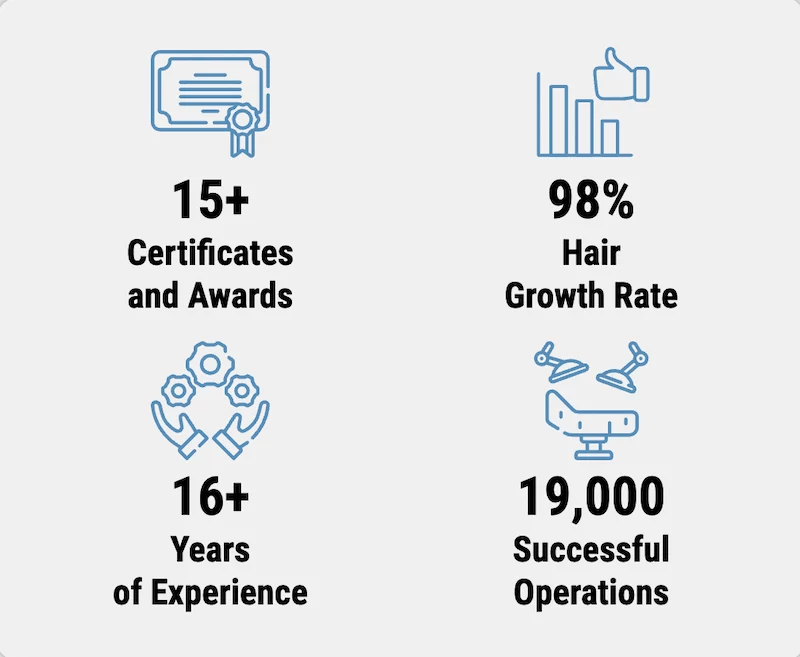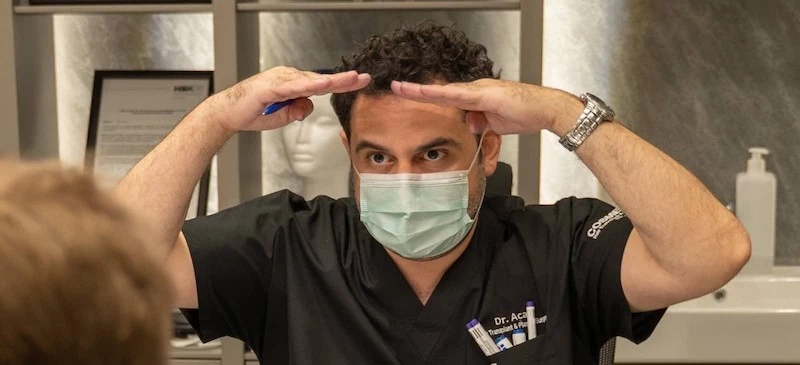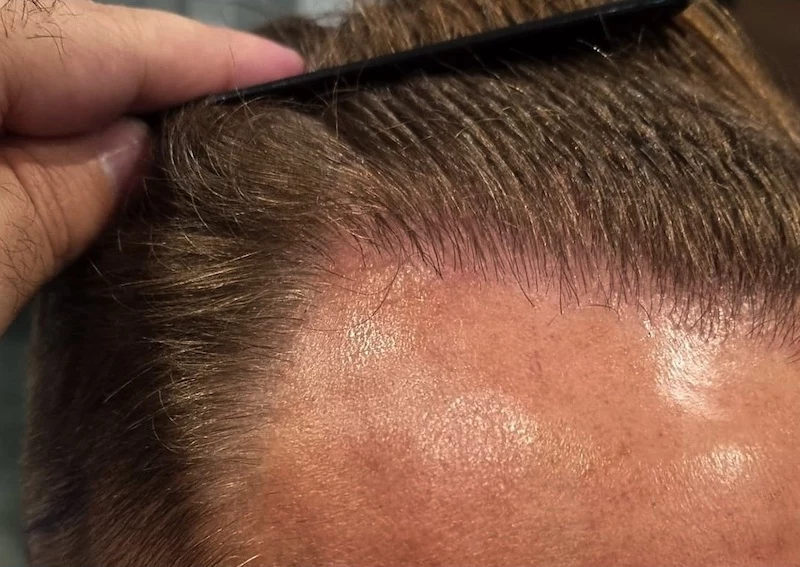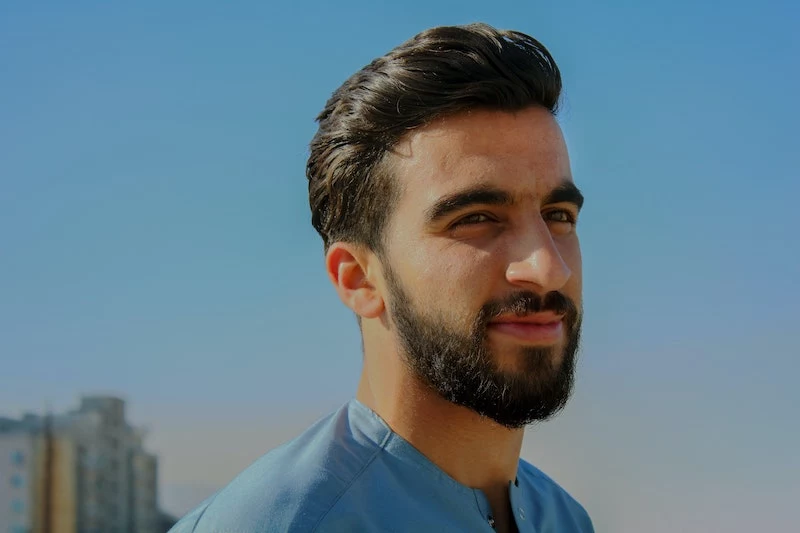Thinking About a Hair Transplant in Turkey? An Insider’s Guide
So, You’re Thinking About a Hair Transplant…
For years, I’ve been deep in the world of hair restoration. I’ve seen it all, from the early, clunkier methods to the incredibly refined techniques we use today. My journey has taken me from the meticulous, conservative clinics in Europe to the bustling, high-volume heart of the industry in Istanbul. It’s a city that has truly become a global hub for this work.
In this article
- So, You’re Thinking About a Hair Transplant…
- First, a Little Science (The Important Part!)
- Breaking Down the Main Techniques: FUE, DHI, and FUT
- The Turkish Model: What You Get and What It Costs
- What to Actually Expect on Procedure Day
- Your Guide to Choosing a Great Clinic
- Your First 10 Days: A Recovery Timeline
- A Final, Honest Disclaimer
- Inspirational Gallery
I’ve been on the front lines, leading surgical teams, training new technicians, and consulting on thousands of cases. And I’ve noticed one thing: a lot of people are looking to Turkey, drawn in by the promise of top-tier results without the sky-high price tag. And honestly, they’re not wrong. But that’s not the whole story.
My goal here isn’t to sell you anything. It’s to pull back the curtain and have the kind of frank, honest conversation I have with every person who sits in my consultation chair. I want to arm you with the knowledge to cut through the marketing noise, ask the right questions, and know what a truly successful outcome looks like. Let’s get into it.

First, a Little Science (The Important Part!)
Before we even touch on techniques like FUE or DHI, you’ve got to understand the simple biological magic that makes this all possible. A good hair transplant works with your body, not against it. The whole field is built on one core principle: ‘donor dominance’.
Why Your Donor Area is Your Goldmine
Most common pattern baldness is caused by a hormone called DHT. It’s a bit of a bully. It targets the hair follicles on the top and front of your head, shrinking them over time until they just give up and stop growing hair. If you’ve ever looked up the Norwood Scale (a chart showing the stages of hair loss), you know exactly which areas I’m talking about.
But here’s the cool part: the hair on the back and sides of your head is genetically built different. Those follicles are tough and resistant to DHT. Donor dominance means that if we carefully move a follicle from this safe zone to a balding area, it keeps its superpowers. It will continue to grow in its new home, completely unbothered by the DHT that wiped out its neighbors. We aren’t creating new hair; we’re just strategically relocating your own healthy, permanent hair.

The Growth Cycle and the Dreaded “Shock Loss”
Heads up! This is something every patient needs to be prepared for. A transplant is a big event for your hair follicles. The stress of being moved causes most of them (and sometimes even some of your existing native hair) to enter the resting (telogen) phase of the hair growth cycle. This results in shedding.
This “shock loss” phase usually kicks in around two to four weeks after your procedure, and it can be pretty alarming. Your scalp is bare again where the new hairs were placed. But don’t panic! It’s a completely normal and expected part of the healing process. The follicle itself is safe and sound just beneath the skin. After a few months of chilling out, new, permanent hair will begin to sprout. This is a marathon, not a sprint. You won’t see your real, final result for a good 12 to 18 months, especially in the crown area.

Breaking Down the Main Techniques: FUE, DHI, and FUT
The tools have gotten better over the years, but the goal is always the same: move follicles from point A to point B with as little damage as possible. Let’s look at the main ways the pros get it done.
FUT (Follicular Unit Transplantation) – The Traditional Strip Method
This was the go-to method for a long time. It involves surgically removing a thin strip of skin from the donor area. Technicians then meticulously dissect this strip under microscopes to get individual follicular units. The big advantage is that you can get a massive number of grafts (think 4,000+) in one go, which is great for advanced hair loss. The major downside? It leaves a fine, linear scar on the back of your head. While a good surgeon can hide it well, you’ll never be able to buzz your hair super short without it being visible. It’s less common in Turkey now, but it’s still a solid option in certain situations.

FUE (Follicular Unit Excision) – The Modern Standard
This is what you’ll see most often, especially in Turkey. Instead of a strip, each follicular unit is taken out one by one using a tiny, hollow punch. The punch is usually between 0.7mm and 1.0mm. It’s a delicate balance; a smaller punch means a less visible ‘scar’ (more like a tiny dot), but a higher risk of accidentally cutting the follicle (we call this transection). A huge part of the skill here is managing the donor area. If a team gets greedy and takes too many grafts from one spot, you’re left with a patchy, moth-eaten look. An ethical clinic will always prioritize the long-term health of your donor area.
DHI (Direct Hair Implantation) & Sapphire Blades – The Refinements
You’ll hear these terms thrown around a lot. It’s important to know they aren’t totally new methods, but rather advanced tools used during the FUE process.

- Sapphire Blades: In a standard FUE, the surgeon makes the tiny incisions for the new hairs with a steel blade. With Sapphire FUE, they use a blade made from synthetic sapphire. It’s incredibly sharp and fine, allowing for smaller, more precise incisions. This can mean less tissue trauma, potentially faster healing, and the ability to pack grafts closer together for a denser look. It’s a great tool, but let me be clear: the artist holding the brush is more important than the brush itself. The surgeon’s skill is what counts most.
- DHI (The “Pen” Method): This technique uses a special tool called a Choi Implanter Pen. The graft is loaded into the pen, and the surgeon then directly implants it into the scalp in one motion—it creates the site and places the graft at the same time. The main benefit is that the graft spends less time outside the body and is handled less, which can improve survival rates. It gives amazing control over depth and angle. The trade-off? It’s often slower and can be more expensive, requiring a highly skilled team to keep the pens loaded and ready.

The Turkish Model: What You Get and What It Costs
Turkey’s spot at the top of the hair transplant world is no accident. It’s a mix of lower overhead costs, government support for medical tourism, and, most importantly, immense experience from a high volume of procedures.
The Famous “All-Inclusive Package”
Almost every clinic in Istanbul offers an all-inclusive package. This is a game-changer for international patients because it takes the stress out of logistics. But what’s actually in it?
Typically, a package includes: The procedure itself, a 2-3 night stay in a nice hotel (often 4 or 5-star), and all your transfers in a private van (airport to hotel, hotel to clinic). It also usually includes your post-op care kit, which has special shampoo, lotion, and any necessary medications. What’s NOT included? Your flight tickets and most of your meals. Always double-check the specifics before you book.
Let’s Talk Money: The Real Numbers
This is probably the number one reason you’re looking at Turkey. The cost difference is significant. To give you a realistic idea, a high-quality FUE or DHI procedure for around 4,000 grafts in a reputable Turkish clinic might range from $2,500 to $5,000 USD. For context, that very same procedure in the United States or the UK could easily cost you $15,000 to $20,000, or even more. The value is undeniable, but it’s why doing your homework is so critical.

What to Actually Expect on Procedure Day
The technical stuff is one thing, but what does it actually feel like to be the person in the chair? First, you’ll have your final consultation and the doctor will draw your new hairline on your forehead with a marker. This is your LAST chance to give feedback, so speak up! Then, they’ll likely shave your head.
The most uncomfortable part of the day, honestly, is the local anesthetic. It involves a series of injections into your scalp, and it stings. But after about 10-15 minutes, your scalp is completely numb, and you won’t feel any pain for the rest of the day—just pressure and movement.
Then, you settle in for the long haul. A procedure can take 6 to 8 hours, or even longer. You’re awake the whole time. Most clinics have TVs with Netflix, or you can listen to music or podcasts. You’ll take a break for lunch. It’s less of a painful ordeal and more of a long, boring day, so be prepared for that!

Your Guide to Choosing a Great Clinic
Navigating the options can be overwhelming. Here’s how to separate the good from the bad.
Green Flags vs. Red Flags
Pay attention to the signals a clinic sends. They tell you everything you need to know.
- GREEN FLAG: They focus on creating a natural, age-appropriate hairline. They explain why a 50-year-old shouldn’t have the hairline of a 19-year-old.
RED FLAG: They promise you a perfect, super-low celebrity hairline without any discussion of what looks natural for your face and age. - GREEN FLAG: They are transparent about who does what. They’ll tell you the doctor designs the hairline and performs the extractions/incisions, while experienced technicians handle the placement.
RED FLAG: They are vague about the doctor’s involvement or you get the sense the doctor just oversees multiple rooms at once. - GREEN FLAG: The consultation feels educational. They manage your expectations and even tell you if you’re not a good candidate.
RED FLAG: The consultation feels like a high-pressure sales pitch. They promise guaranteed results before even seeing detailed photos of your hair.

Your Clinic Vetting Toolkit: 3 Questions to Ask Every Clinic
Before you even think about putting down a deposit, send an email with these exact questions. Their answers (or lack thereof) are very telling.
- “Will the doctor I am consulting with be the one who personally designs my hairline and performs the critical parts of the surgery (the extractions and the incisions)?”
- “What is the maximum number of patients the surgeon oversees or operates on in a single day?” (A good clinic usually focuses on just 1-2 patients per lead surgeon per day).
- “Can you please show me at least three clear, well-lit before-and-after cases of patients with a similar age, hair type, and level of hair loss to mine? The photos must be at least 12 months post-op and include shots of the healed donor area.”
Your First 10 Days: A Recovery Timeline
The clinic’s job ends when you walk out the door. Now it’s up to you. The first 10 days are CRITICAL for graft survival.

- Days 1-3: Swelling is the main event. Your forehead might puff up, and it can even drift down to your eyes. It looks weird, but it’s normal! Sleep with your head elevated on a few pillows to help it drain. You’ll be gently misting your scalp with a saline spray provided by the clinic.
- Day 3-4: Time for the first wash. This is a very gentle process, often done at the clinic. They’ll show you how to delicately pat special shampoo and lotion on the area. No scrubbing!
- Days 5-10: You’ll see tiny scabs forming around each transplanted hair. Your main job is to let them be. As you continue your gentle daily washes, they will soften and start to fall off on their own around day 10. DO NOT PICK THEM. I can’t stress this enough. Picking scabs can pull out the graft.
After about 10-14 days, the grafts are secure. You can start washing your hair more normally, and the dreaded shock loss will begin soon after. Just remember the timeline and trust the process.
A Final, Honest Disclaimer
I’ve shared my professional experience here to help you make a better, more informed decision. But please remember, this is educational information, not personal medical advice. Your hair loss pattern, your age, the quality of your donor hair, and your health history are all unique to you. The only way to know if a hair transplant is right for you is to have a direct, one-on-one consultation with a qualified and experienced physician. Results always vary from person to person, and patience is your best friend on this journey.
Inspirational Gallery
According to the International Society of Hair Restoration Surgery (ISHRS), only a physician should perform the surgical-step incisions and extractions in a hair transplant procedure.
This is a critical point to verify. While skilled technicians are essential for graft handling and implantation, the initial surgical steps require a doctor’s hand. In your consultation, ask directly: “Will the doctor be performing the channel opening or extractions?” A reputable clinic will have a clear and proud answer.
The Post-Op Power Duo: ATP Spray & Gentle Shampoo. Your clinic will provide a care kit, but knowing what’s inside is key. A sterile saline or ATP (Adenosine Triphosphate) spray used in the first few days is crucial for keeping grafts hydrated and promoting healing. After the initial period, a gentle, sulphate-free shampoo, often from Turkish brands like Bioxcin or Sebamed, is non-negotiable to clean the area without irritating the new follicles.
Will my hairline look completely natural?
This is the ultimate goal, and it’s an art form. A natural look isn’t about creating a perfectly straight, dense line. It’s about irregularity. A top-tier surgeon will mimic nature by using single-hair grafts for the very front of the hairline, placing them in a slightly staggered, imperfect pattern. They will also meticulously control the angle and direction of each hair so it grows out, not straight up, blending seamlessly with any existing hair.
Don’t underestimate the psychological journey. The two weeks post-op can be challenging, with swelling, scabbing, and the need for careful sleeping positions. Then comes the ‘shedding phase’ around week 3-5, where the newly transplanted hairs fall out before regrowing. This is normal but can be alarming if you’re not prepared. Trust the process, follow your aftercare, and remember that the real results start to appear from month four onwards.
- Faster, more comfortable healing.
- Maximized graft survival rate.
- Reduced risk of infection or scarring.
The secret isn’t a magic pill; it’s diligent aftercare. The most critical period is the first 10 days. This means following the clinic’s specific washing instructions to the letter, avoiding sun exposure, refraining from strenuous exercise, and sleeping with your head elevated to minimize swelling.
Sapphire FUE: This technique uses blades made from synthetic sapphire instead of traditional steel to open the channels where grafts are placed. The benefit lies in creating finer, more precise V-shaped incisions, which can lead to less tissue trauma, reduced scabbing, and potentially denser packing of grafts.
DHI (Direct Hair Implantation): Here, extraction and implantation are combined. A specialized tool, the Choi Implanter Pen, implants each graft directly without pre-made incisions. This offers maximum control over the depth, angle, and direction of each follicle.
Often, the best approach is a hybrid, using different techniques for different areas of the scalp.
The All-Inclusive Trap: Many Turkish clinic packages sound incredible: flights, 5-star hotel, VIP transfers, and the procedure. While often legitimate, be wary of what’s *not* said. Does the price depend on the final graft count? Are post-op medications and care products included? Is there a language barrier, or will a dedicated translator be with you at all times? Clarify every detail before you pay a deposit.
A transplant doesn’t stop future hair loss. It relocates DHT-resistant hair, but the native, non-transplanted hair around it may still be vulnerable.
Beyond the clinic, your trip to Istanbul is a unique experience. Most patients are cleared for gentle sightseeing a day or two after their procedure. Imagine exploring the historic Sultanahmet district or enjoying a Bosphorus ferry ride, all while wearing the discreet surgical bandana provided by your clinic. It’s a surreal but memorable blend of medical journey and cultural discovery.
Before you even think about graft numbers, consider your donor area’s capacity. It’s a finite resource.
- A good clinic will assess its density and elasticity.
- They will plan for the long-term, preserving enough hair for a potential second procedure years later.
- Beware of any clinic promising an astronomical number of grafts (e.g., 6000+ in one session) without a thorough donor analysis, as over-harvesting can lead to permanent thinning or bald patches on the back of your head.










